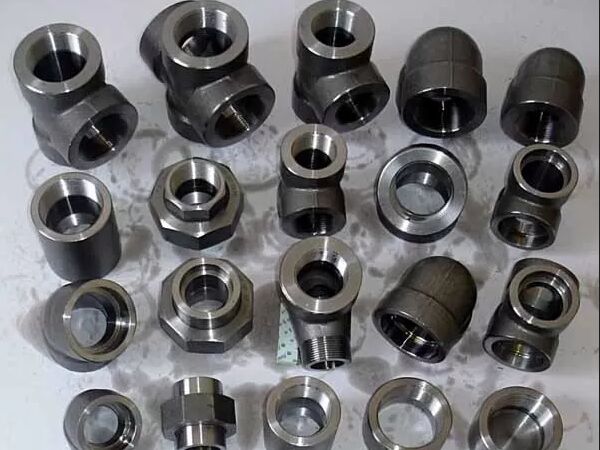Low carbon steel fittings refer to various types of pipe connection parts made from carbon structural steel (such as Q195, Q215, Q235, etc.) with a carbon content generally not exceeding 0.25% (most standards require ≤0.22%) through forging, rolling or welding processes. Due to its low cost, good weldability and excellent toughness, it is widely used in industries such as petroleum, chemical engineering, power, water supply and drainage, HVAC, fire protection and mechanical manufacturing.

The basic characteristics of low carbon steel
Carbon content: The carbon content of low-carbon steel is usually between 0.05% and 0.25%. The relatively low carbon content gives it the following characteristics:
High ductility: Easy to cold form (such as bending and stamping).
Good weldability: It is less likely to produce cracks during welding and is suitable for various welding processes (such as arc welding and gas shielded welding).
Lower hardness: The hardness is lower than that of high-carbon steel, but it can be enhanced through surface treatment (such as carburizing).
Moderate strength: The tensile strength is approximately 400 to 550Mpa, suitable for non-extreme load scenarios.
Chemical composition and mechanical properties
C (carbon) : 0.12-0.22%
Si (Silicon) : 0.17-0.35%
Mn (Manganese) : 0.30-0.65%
P (phosphorus) : ≤0.035%
S (sulfur) : ≤0.035%
Yield strength: ≥235 MPa
Tensile strength: 345-475 MPa
Elongation: (L0=5.65√S)≥26%
Impact toughness: (-20 ℃) ≥27 J
Common classifications of low-carbon steel pipe fittings
According to their uses and shapes, they are mainly classified into the following categories:
Elbow: Common elbow angles include 45°, 90°, and 180°. There are also special angles. It is divided into long radius (R = 1.5D) and short radius (R = D).
Tee: It can be divided into Butt-welding Tee and Socket-welding Tee.
Reducer: It can be divided into Concentric Reducer and Eccentric Reduce.
Cap: Butt welding cap, socket welding cap.
Direct (Coupling) : Socket welding direct, thread direct.
Cross: Four-way, used for branching complex pipelines.
Manufacturing process
Hot forging/cold forging
Principle: The steel billet is heated and forged into shape in a mold (hot forging), or formed at room temperature through high pressure (cold forging).
Characteristics: High forging density and excellent mechanical properties, but relatively high cost.
Bending + welding
It is suitable for butt welding at the ends after the forming of elbows and straight pipe sections. Or the sheet is rolled and then welded (welded tees).
The weld seams need to undergo heat treatment and non-destructive testing to ensure strength and sealing.
Cutting + stamping (cap parts)
First, cut the pipe end flat, then stamp it into a cap shape, and finally finish it through heat treatment or cold working.
Surface treatment
Pickling/phosphating → Painting after phosphating → hot-dip galvanizing (commonly used for plumbing and outdoor anti-corrosion).
Or epoxy powder coating, epoxy resin coating, etc.
Applicable standard
International standard
ASTM A234 WPB (Butt-weld elbows, tees, reducers, etc.)
ASTM A105 (Forged Steel Flanges, forgings)
European standard
EN 10253-1/2 (Butt-welded pipe fittings - Part 1: Materials, Part 2: Manufacture and testing)
EN 10241 (Threaded Pipe Fittings)
Quality control and inspection
Raw material inspection
Chemical composition analysis (spectrometer) : Ensure that C, P, S, Si, Mn, etc. meet the standards.
Mechanical property tests: tensile, hardness, impact.
Process control
Forging/welding parameter records: temperature, pressure, welding process specifications.
Non-destructive testing (NDT) : Radiographic testing (RT), ultrasonic testing (UT), magnetic particle testing (MT), penetrant testing (PT).
Size and appearance inspection
Pipe diameter, thickness, long and short radius, bevel Angle, joint size.
The appearance has no cracks, pores or slag inclusions. The surface treatment is uniform.
Pressure test
Water pressure or air pressure test: The normal pressure test is generally ≥1.5× working pressure;
Pressure holding and leakage detection.
Summary
Low-carbon steel pipe fittings, with their excellent welding performance, economy and relatively good mechanical strength, have become the first choice for industrial and civil pipeline systems.
